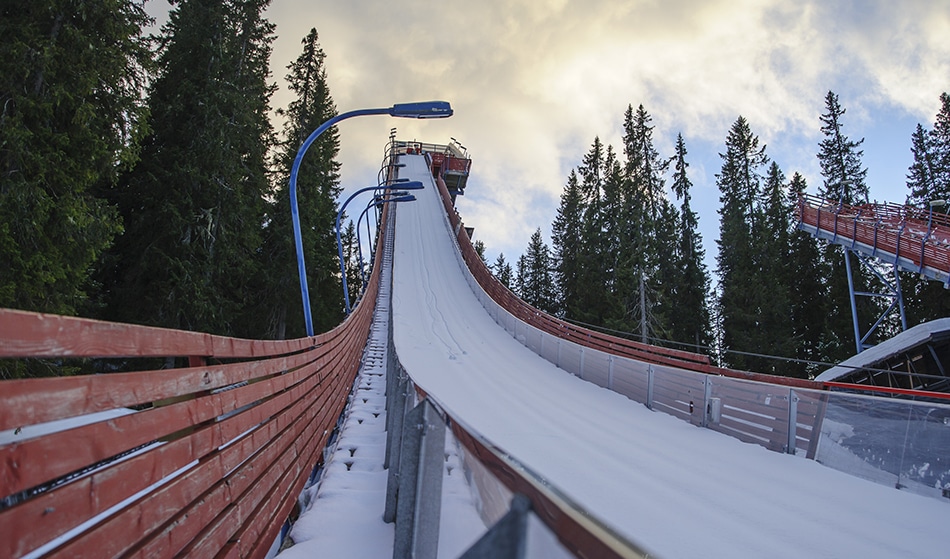 By Isabelle Robinson, M.Sc.Feb 1 2018
By Isabelle Robinson, M.Sc.Feb 1 2018On the 9th of February 2018, the best ski jumpers in the world will descend on Pyeongchang, South Korea for the 23rd Winter Olympic Games. They will compete at the Alpensia Jumping Park which is equipped with the latest ceramic technology by the German company, CeramTec.
 majusko95/shutterstock
majusko95/shutterstock
Built in 2009, the ski jumping center is home to five artificial jumping hills. The “Normal Hill” and the “Large Hill” are to be used in the Olympic Games and are 90 m and 120 m in length respectively.
Both tracks are equipped with ALOSLIDE® ICE technology from CeramTec. These technical ceramics make up the one-track inrun system which allows the competitors to have the best possible jumping conditions regardless of the weather.
The use of ceramics in the tracks allows ski jumping events to take place year-round and has the added advantage of ensuring that each of the athletes undertakes their jump in identical conditions.
Project Manager Eddi Kropp of CeramTec explains that the system has been scientifically tested and designed to ensure optimum performance. The system is made from ceramic nubs and an integrated automatic irrigation and cooling system to create a constant and stable layer ice over the tracks.
This layer is created from the humidity of the cooled down track and is regulated to a 20 mm thickness using a milling cutter and brushes incorporated into the system.
The ALOSLIDE® ICE technology is also made for summer operation in which the ski jumpers can skate down the hill on the ceramic nubs without the need of an ice layer.
The ceramic nubs are an aluminum oxide (Al2O3) ceramic known for its good gliding properties and its high resistance to corrosion and wear. This makes it the perfect material to be used on a ski slope. In addition to this, aluminum oxide has a low density of approximately 3.95g/cm3 and a very high compressive strength of up to 4000MPa, although the properties of this material can be changed via altering its matrix design.
Aluminum Oxide ceramics can offer a wide range of applications in the electronics, textile engineering and chemical industries and have been used in heavy duty forming tools, ballistic protection, hip joint replacements and many more.
This is not the first time that technical ceramics have been used in an Olympic competition. The 2006 and 2014 Winter Olympic Games in Turin and Sochi used the aluminum oxide ceramic as part of their ski jumping hills with great success.
Looking toward the future, there is no guarantee that there will be sufficient snowfall for winter sports anymore and it is likely that technical ceramics such as this one will be used in more winter sporting events to prevent delays and cancellations.
On February 10th and 12th, the Winter Olympic Ski Jumpers will start on the Normal Hill with the Men's and Women's Individual Jumps. This is followed by the Men's Large Hill Individual Jump on February 17th. The Men’s Team Jump which is also located on the Large Hill, will take place on February 19th.
This story is reprinted from material from CeramTec, with editorial changes made by Azo Network. The original article can be found here.
Disclaimer: The views expressed here are those of the author expressed in their private capacity and do not necessarily represent the views of AZoM.com Limited T/A AZoNetwork the owner and operator of this website. This disclaimer forms part of the Terms and conditions of use of this website.